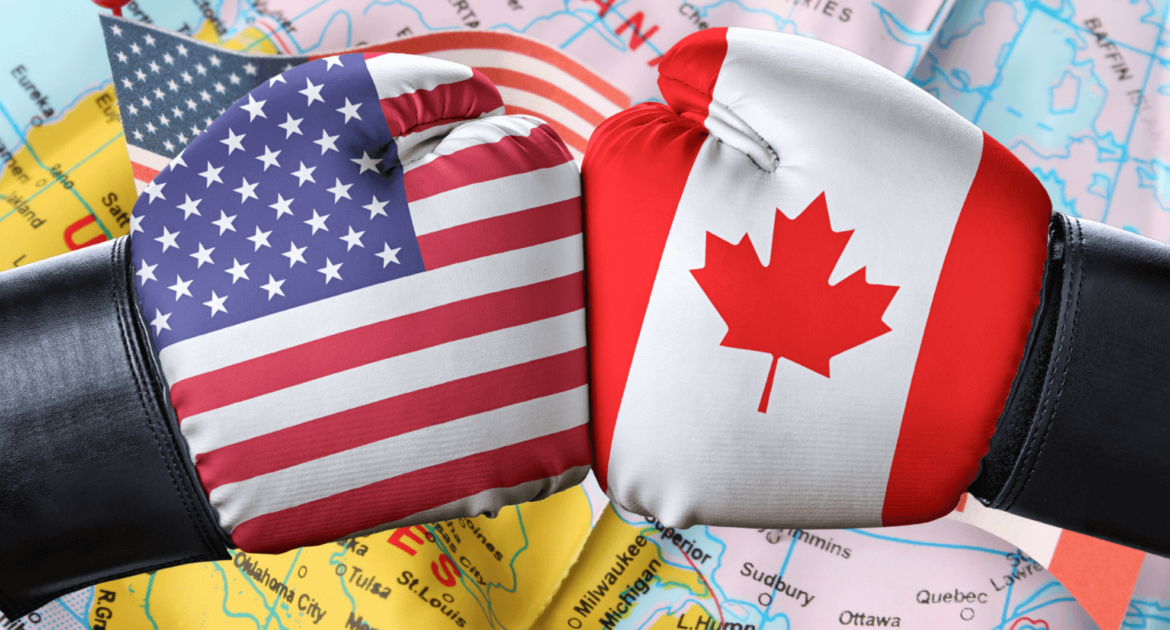
Who Are They Fooling? Canada’s Deep Dependence on the United States: Economic and Defense


Canadians are applauding the tough stance their government is taking against the United States after the Ontario Premier threatened, in response to Trump’s latest tariffs on Canada, “We’re Gonna…Inflict as Much Pain as Possible on The American People,” with many canceling their travel plans to the U.S. in support, while their new Prime Minister, Mark Carney, declared that the old relationship with the U.S. is over, earning him praise as a hero, though the reality is that Canada is far more dependent on the U.S. than the U.S. is on Canada, and severing ties would be akin to economic suicide.
Canada and the United States have long shared a multifaceted relationship, their 5,500-mile border tethering Canada’s prosperity and security to its southern neighbor through deep economic ties, defense collaborations, and shared infrastructures. This interdependence has shaped Canada’s strategic decisions for decades.
On March 27, after a cabinet meeting in Ottawa, Prime Minister Mark Carney declared, “The old relationship based on economic integration and military cooperation is over,” citing President Donald Trump’s steep tariff threats—including a 25% levy on Canadian cars and parts—as a “direct attack” violating the USMCA. With Trump hinting at even harsher measures on Truth Social, Carney warned that the U.S. is no longer reliable, vowing to “dramatically reduce” Canada’s dependence and pivot toward allies like France and the UK. Promising forceful retaliatory trade actions as Canada now braces for a trade war, marking the end of decades of trust and a urgent push for new global alliances.
Canada’s economy is profoundly linked to the U.S., its largest trading partner. In the first three quarters of 2024, approximately $600 billion in goods crossed the border, rising to $683 billion with services included. Nearly every Canadian province directs at least 55% of its exports to the U.S., with some seeing trade account for 17% to 40% of their GDP. Nationally, exports to the U.S. made up 16.8% of Canada’s GDP in 2023, with critical commodities like oil, natural gas, and minerals—such as uranium and potash—flowing south.
Another economic benefit Canada risks losing by cutting ties with the U.S. is foreign direct investment (FDI). The amount of U.S. FDI in Canada was approximately $58 billion in 2024, accounting for about 45% of Canada’s total FDI. Meanwhile, Canadian FDI inflows into the United States totaled $69 billion in 2023. The difference, however, lies in the motivations: foreign companies, particularly Chinese ones, invest in Canada to export products tariff-free to the U.S. under trade agreements like the USMCA. But now, with U.S. tariffs on Canadian imports—such as the proposed 25% duties in 2025—those exports would become costlier, likely reducing such FDI. Conversely, one of the reasons Canada invests in the U.S. to access global markets and facilitate overland trade with Mexico. If tariffs disrupt the U.S.-Canada border, Canadian production and investment in America could grow even more critical.
The Canadian government established a $4.8 billion USD fund to assist businesses impacted by the loss of U.S. exports, providing loans and export support. Rather than generating income, this fund imposes a burden on taxpayers. Moreover, it covers only 1% of the $438.5 billion USD in U.S. trade and fails to prevent a substantial revenue decline.
Canada’s other move—courting Europe and other countries—won’t replace the U.S., the world’s largest export market, since Canada already trades with 190 nations, leaving no new partners to tap. Asking these countries to buy more Canadian goods won’t work; they’re at capacity, and losing U.S. demand didn’t spark hunger for our products elsewhere—plus, shipping costs make those exports pricier than to the U.S. Worse, the trade surplus we enjoy with the U.S. won’t fly with others; they’ll demand imports in return, flipping Canada’s surplus into a deficit as our costs rise.
Not only its economy, but also Canada’s defense strategy leans heavily on the U.S. Canada depends on U.S.-led Five Eyes intelligence. The Canadian Armed Forces (68,000 personnel) pale beside the U.S.’s 1.3 million, relying on American might via NORAD—established 1958—to secure borders and airspace, especially as Russia and China threaten the Northern Route through the Arctic with repeated air force and navy incursions above Canadian waters, around Alaska, and near Greenland to dominate this strategic passage.
Canada’s investments in radar, submarines, and jets cannot match U.S. naval depth or its $900 billion USD defense budget (versus Canada’s $19.3 billion USD). And the only countries apart from the US with powerful enough militaries to challenge Russia and China are Russia and China, so unless Canada will enter a defense pact with those two countries, there is no one poised to defend Canada from them.
The bottom line is that Canada depends on the United States for economy and defense, and the US is an indispensable partner in both areas. Canada, by contrast, is not crucial for the US.
The post Who Are They Fooling? Canada’s Deep Dependence on the United States: Economic and Defense appeared first on The Gateway Pundit.
